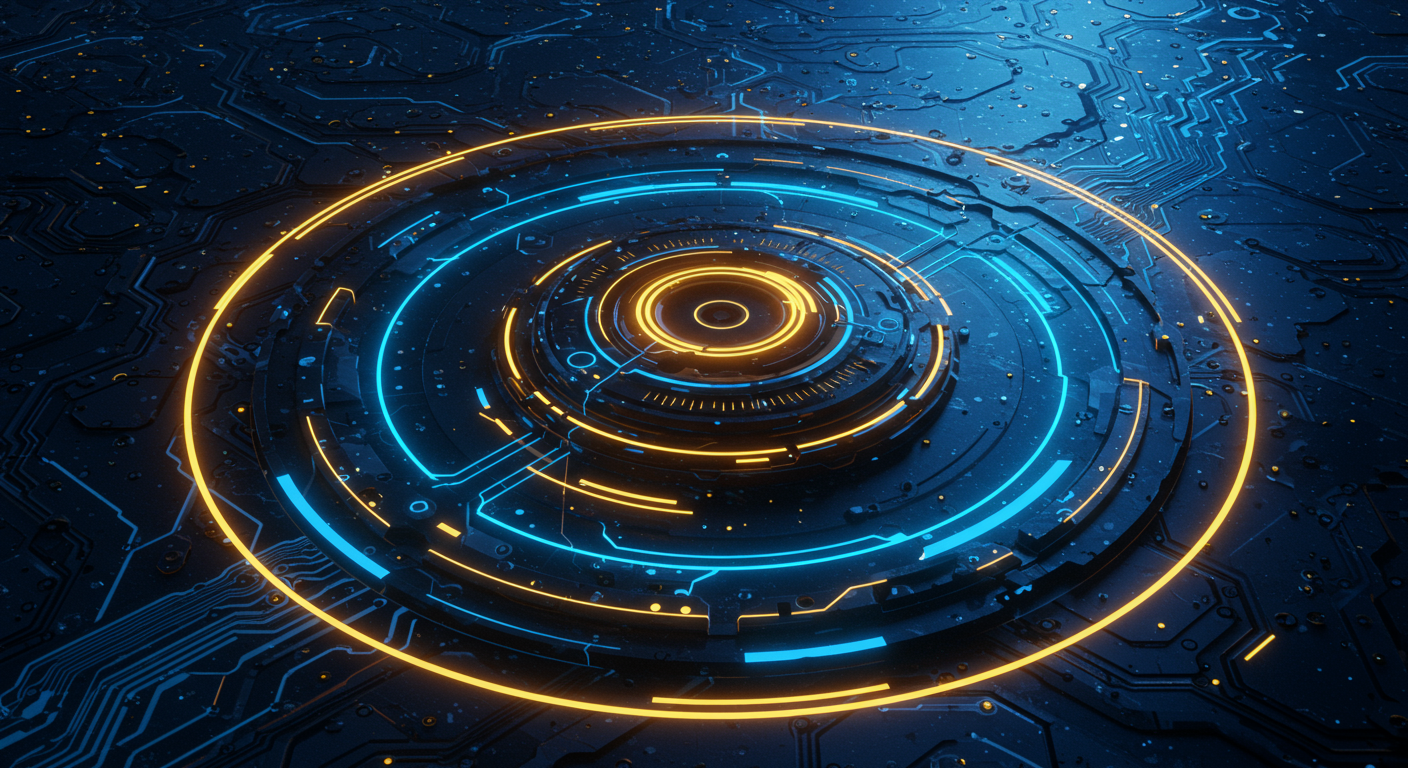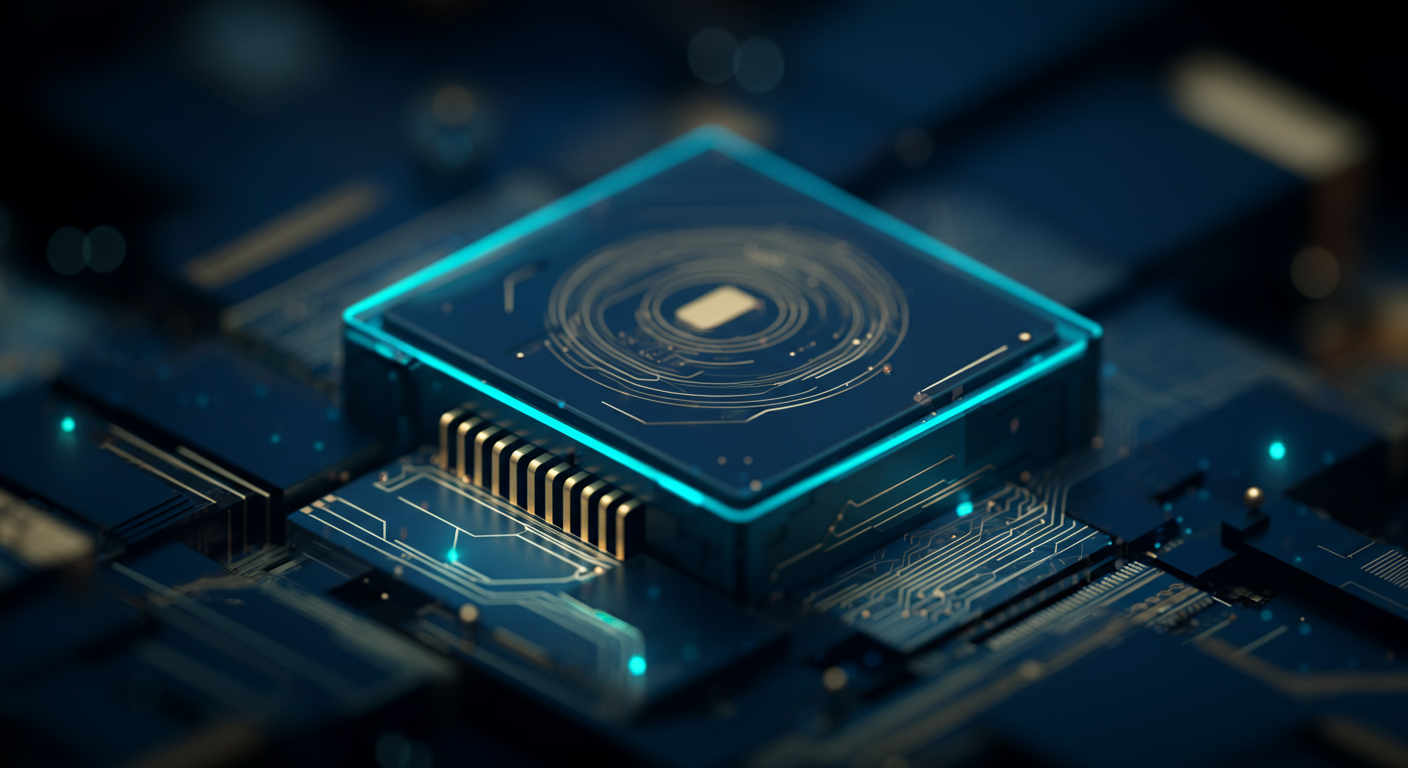Deterministic AI: Unleashing Predictable Performance with Specialized CPUs

The pursuit of Artificial Intelligence has led us to astonishing advancements, but now demands a crucial pivot: deterministic AI.
Defining Deterministic AI
Deterministic AI moves beyond probabilistic models, where outputs can vary even with identical inputs. Instead, it strives for reliable outcomes. Think of it as the difference between flipping a coin and performing a precise calculation. For instance, in a deterministic system, the same driving conditions always lead to the same steering adjustments in an autonomous vehicle.Why Determinism Matters
Traditional CPUs and GPUs, while powerful, often fall short in AI inference tasks needing real-time responses. They weren't inherently designed for the predictability now demanded:- Safety-critical applications: Autonomous driving, robotics, and medical devices cannot afford unpredictable AI behavior.
- AI Safety: Predictable AI aligns behavior with human intentions. This reduces the potential for AI safety concerns.
The Cost of Non-Determinism
Non-deterministic AI introduces significant risks:- Unreliable Systems: Applications become unpredictable, leading to inconsistent performance.
- Difficulty in Debugging: Tracing errors becomes exponentially harder, hindering development and maintenance.
Here's how deterministic CPUs are ensuring predictable performance in the AI era.
Understanding Deterministic CPUs: Architecture and Functionality
Deterministic CPUs are engineered to execute instructions with predictable timing, a stark contrast to the variable execution times often seen in general-purpose CPUs and GPUs. Let’s break down what makes them tick:
- Predictable Execution: Unlike traditional CPUs that optimize for average-case performance, deterministic CPUs prioritize consistent execution times for each instruction.
- Specialized Hardware: Deterministic CPUs employ specialized hardware components to minimize sources of variability, such as caches and branch predictors.
- Real-Time Operating Systems (RTOS): These CPUs often work in tandem with an RTOS to manage tasks and ensure timely execution. RTOS ensures tasks are handled within strict deadlines, vital for AI in Practice.
- Minimal Interrupt Latency: Interrupt handling is carefully managed to reduce latency, which can disrupt the timing of critical tasks.
Deterministic vs. Traditional Processors
| Feature | Deterministic CPU | Traditional CPU/GPU |
|---|---|---|
| Execution Timing | Predictable | Variable, optimized for average case |
| Use Cases | Real-time systems, robotics, industrial control | General computing, gaming, graphics processing |
| Architecture | Specialized | General-purpose |
"Deterministic CPUs trade raw computational power for reliability, making them ideal for applications where timing is critical."
Achieving Determinism

Achieving deterministic behavior requires careful attention to both hardware and software:
- Clock Speed: While higher clock speeds generally mean faster execution, consistency is key; therefore, maintaining stable clock speeds is crucial.
- Memory Access: Memory access patterns are optimized to minimize latency and ensure predictable data retrieval times. Think direct memory access (DMA) controllers.
- Interrupt Handling: Interrupts are managed to minimize latency and avoid disrupting the timing of critical tasks. This often involves prioritizing interrupts and carefully managing their execution.
Achieving deterministic AI inference requires more than just algorithms; it needs specialized hardware.
Predictable AI Performance
Achieving consistent and predictable latency is paramount in many AI applications. Traditional CPUs and GPUs can suffer from latency spikes due to various factors like:- Interrupt handling
- Memory access contention
- Cache misses.
Jitter Reduction
Jitter, or the variation in processing time, is the enemy of real-time AI. Deterministic CPUs are designed to minimize jitter by:- Optimizing memory access patterns
- Controlling interrupt latency.
Real-Time Applications
Real-time AI applications, such as autonomous driving and industrial robotics, demand guaranteed performance. Deterministic CPUs enable these applications by:- Ensuring timely execution of critical AI tasks
- Providing the necessary guarantees for safe and reliable operation.
- Industrial automation, where precise control is essential.
- Aerospace, for reliable navigation.
- Defense systems, where immediate response is vital.
Reliability and Safety
Improving the reliability and safety of AI-powered systems hinges on predictable behavior. By providing a more deterministic execution environment, these specialized CPUs contribute to:- Reducing the risk of errors
- Enhancing the overall robustness of AI systems.
Hook readers with the opening sentence.
Applications of Deterministic AI: Real-World Examples

Deterministic AI, driven by specialized CPUs, brings predictability to complex tasks, crucial where reliability is paramount. These range from robotics to finance, ensuring consistent performance every single time.
- Autonomous Driving:
- Robotics:
- Industrial Robots: Achieving highly accurate and repeatable movements.
- Medical Robots: Performing precise surgical tasks with consistent outcomes. Deterministic AI in robotics enables precise, coordinated movements.
- Medical Devices:
- Financial Trading: Executing trades with predictable latency and minimal risk.
- Aerospace and Defense: Ensuring reliable operation of critical control systems and autonomous drones.
Deterministic AI's ability to provide predictable outcomes across various domains highlights its potential to revolutionize industries reliant on precision. Now, let's consider how this could change business automation.
Programming and Development for Deterministic CPUs
Harnessing the power of deterministic CPUs requires a shift in how we approach programming and development. It's not just about the hardware; it's about crafting code that guarantees predictable execution.
Programming Languages and Tools
Deterministic CPUs often leverage languages like Ada, known for its strong typing and emphasis on reliability, as highlighted in this Ada: The AI Programming Language Revolutionizing Software Development blog post. This control is critical in embedded systems and real-time applications. Tools like real-time operating systems (RTOS) are essential for managing tasks with precise timing requirements.Techniques for Writing Deterministic Code
The key is to avoid non-deterministic operations:- Eliminate randomness: Steer clear of random number generators unless they're seeded and carefully managed.
- Avoid dynamic memory allocation: Stick to static allocation to prevent unpredictable memory behavior.
- Control data structures: Use deterministic data structures like arrays instead of hash tables where timing is critical.
Debugging and Testing
Debugging deterministic AI means more than just finding errors; it's about proving the absence of timing-related bugs. Rigorous testing involves:- Worst-case execution time (WCET) analysis: Determining the longest possible execution time for a piece of code.
- Formal verification: Using mathematical techniques to prove the correctness of the code.
- Simulation and emulation: Testing the AI application in a controlled environment that mimics real-world conditions.
Optimizing AI Models for Deterministic Architectures
Optimization is crucial for achieving real-time performance:- Model pruning: Reducing the size and complexity of the AI model.
- Quantization: Reducing the precision of the model's parameters to fit within the CPU's capabilities. While beneficial, keep the deterministic mode in mind.
- Specialized libraries: Utilize libraries optimized for the specific deterministic CPU architecture.
Unlocking the full potential of AI requires not just advanced algorithms, but also specialized hardware.
Emerging Trends in Deterministic CPU Technology
Deterministic AI demands CPUs that can guarantee predictable execution times, a stark contrast to the probabilistic nature of standard processors. These advancements are becoming critical:- Specialized architectures designed for AI workloads are on the rise.
- Hardware-software co-design enables better optimization for specific AI tasks.
- Quantum computing may eventually play a role in deterministic AI, though it's still nascent.
The Demand for Predictable AI
The need for deterministic AI is fueled by industries where reliability is paramount:- Autonomous Vehicles: Guaranteeing real-time responses to avoid accidents.
- Healthcare: Ensuring accurate and timely diagnoses.
- Robotics: Controlling complex robotic systems with precision.
AI Safety and Trustworthiness
Deterministic AI plays a vital role in enhancing AI safety:- Predictable behavior makes it easier to verify and validate AI systems.
- Reduced "black box" behavior increases trust in AI decision-making processes.
- It helps address concerns highlighted in AI News, where balancing progress with peril is a constant concern.
Impact on Society and the Economy
The broader implications are significant:- Increased automation across industries boosts efficiency.
- New job opportunities in hardware and software engineering emerge.
- Ethical considerations surrounding AI deployment become more critical.
Neuromorphic Computing
Exploring unconventional approaches could revolutionize deterministic AI:- Neuromorphic chips mimic the human brain, offering potential for energy-efficient and predictable computation.
- These chips can be further researched using tools like Scientific Research AI Tools.
- This field is still in its early stages, but it holds immense promise.
Unlocking the full potential of deterministic AI presents a unique set of challenges, requiring careful planning and resource allocation.
Cost and Availability
Deterministic CPUs often come with a premium price tag due to their specialized architecture. This higher cost can be a significant barrier to entry for smaller organizations or projects."The initial investment in deterministic hardware may require revisiting your budget."
- Limited Availability: Unlike general-purpose CPUs, deterministic CPUs are not as widely available. This can lead to longer procurement times and potential supply chain bottlenecks.
- Consider cloud solutions: Exploring deterministic processing capabilities offered by cloud providers may help mitigate hardware costs.
Development Complexity
Programming for deterministic AI requires a different mindset and skillset compared to traditional software development.- Specialized Programming: Developers need to be proficient in languages and tools optimized for parallel processing and real-time constraints. This often involves learning new techniques and paradigms.
- Deterministic application development: Can be time-consuming.
End-to-End Determinism
Achieving true determinism requires careful consideration of every component in the system.- System Integration: Even with deterministic CPUs, external factors like network latency, sensor noise, and operating system interrupts can introduce variability.
- Mitigation: Rigorous testing, precise synchronization mechanisms, and robust error handling are crucial.
Security Hardening
Deterministic AI systems are equally vulnerable to security threats.- Cybersecurity Copilots: Are needed to defend against attacks (Cybersecurity Copilots Open Source Science and the 250M Talent War Daily News 18 Aug 2025).
Technological Limitations
Current deterministic CPU technology has limitations that need to be addressed.- Scalability: Scaling deterministic AI systems can be challenging, especially for complex models with high computational demands.
- Trade-offs: Achieving determinism often involves trade-offs in terms of flexibility and resource utilization.
Keywords
deterministic AI, deterministic CPUs, predictable AI, real-time AI, AI safety, reliable AI, deterministic machine learning, predictable AI inference, deterministic processor, real-time CPU architecture, deterministic programming, deterministic AI applications, deterministic AI in robotics, deterministic AI in healthcare
Hashtags
#DeterministicAI #RealTimeAI #AISafety #PredictableAI #AIHardware
Recommended AI tools
ChatGPT
Conversational AI
AI research, productivity, and conversation—smarter thinking, deeper insights.
Sora
Video Generation
Create stunning, realistic videos and audio from text, images, or video—remix and collaborate with Sora, OpenAI’s advanced generative video app.
Google Gemini
Conversational AI
Your everyday Google AI assistant for creativity, research, and productivity
Perplexity
Search & Discovery
Clear answers from reliable sources, powered by AI.
DeepSeek
Conversational AI
Efficient open-weight AI models for advanced reasoning and research
Freepik AI Image Generator
Image Generation
Generate on-brand AI images from text, sketches, or photos—fast, realistic, and ready for commercial use.
About the Author

Written by
Dr. William Bobos
Dr. William Bobos (known as 'Dr. Bob') is a long-time AI expert focused on practical evaluations of AI tools and frameworks. He frequently tests new releases, reads academic papers, and tracks industry news to translate breakthroughs into real-world use. At Best AI Tools, he curates clear, actionable insights for builders, researchers, and decision-makers.
More from Dr.

